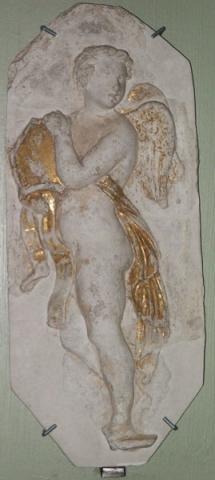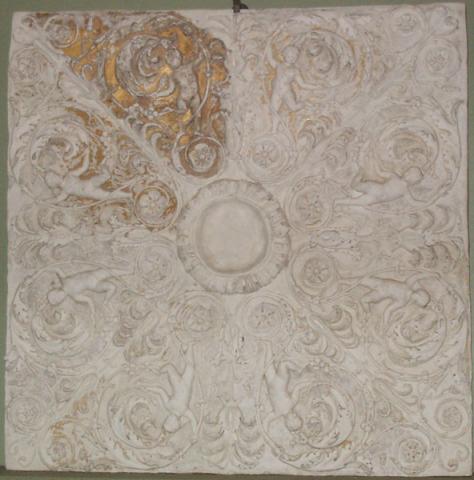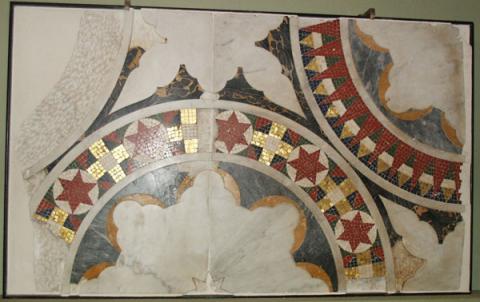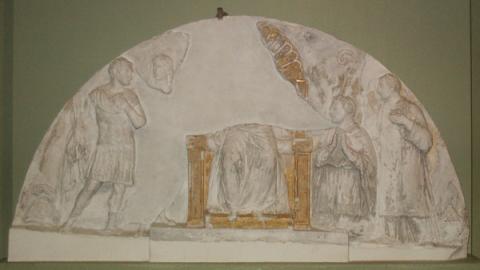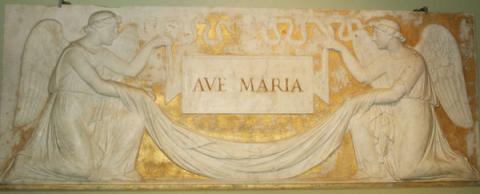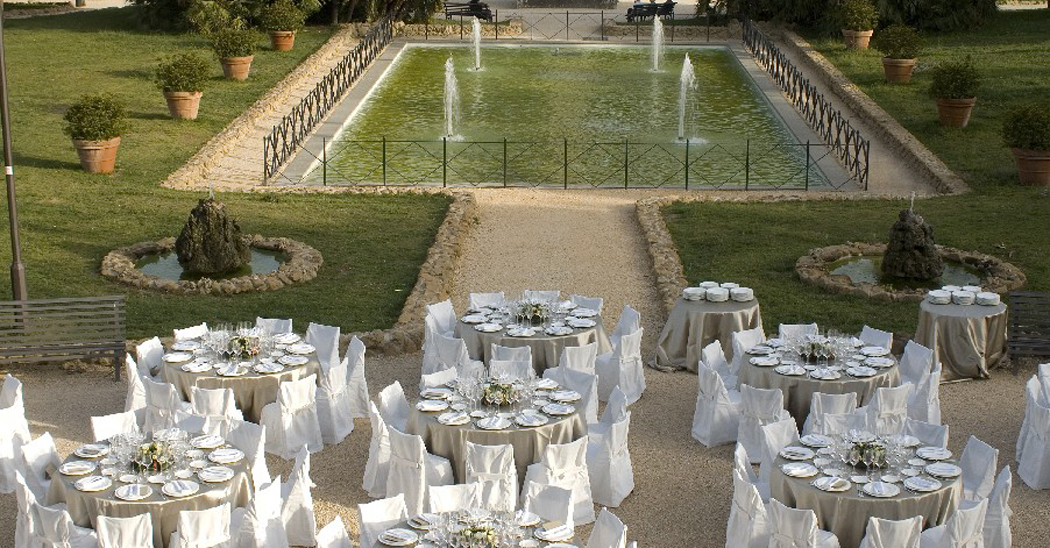Transit room
This small room was used as a boudoir during Mussolini’s residence in the building. It is lined with wall-paper.
During restoration of the Casino, removal of the wall-paper along the ceiling revealed a frieze with small frescoed decorations that resemble elements in the Bacchus Room.
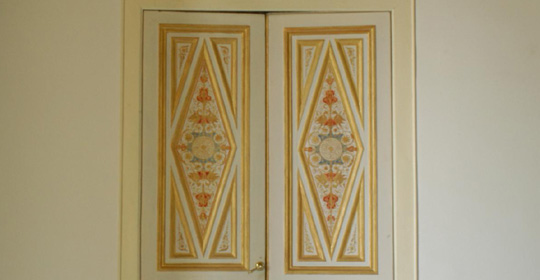
Alessandro’s Chapel
During the enhancements to the Villa made by Alessandro Torlonia between 1833 and 1840, a chapel was built. It was described in the guidebooks of the age but demolished in 1905.
Nothing was left from the building until several items of furniture and architectural fragments were discovered in a room beneath the Theatre in 1997.
According to what we know from the description of the Villa by Giuseppe Checchetelli, published in 1842, Carlo Aureli was responsible for the sculptures in the chapel and (for certain) the stucco lunette. This latter feature was recently reassembled and restored: it contains an image of the Madonna enthroned with four saints – St John on the right, of whom only his head feet remain, and who was a reference to Giovanni Torlonia senior (father of Alessandro); St Alexander, holding a martyr’s palm, and with his helmet on the ground; and then perhaps St Carlo Borromeo and (probably) St Lawrence.
The allusions to Alessandro, who commissioned the work, are clear, whereas the figure of St Lawrence may have referred to the owner of the Complesso Laurentiano, which was close to the Villa.
The upper section of the figure of the Madonna is missing, and as for the Child, there only remains the fragment with two fingers. Traces of gilding indicate the original colour.
The altar-piece is also attributed to Carlo Aureli (in Checchetelli’s account), who based the design of this relief on the style of Donatello. With their right hands two angels at the sides raise drapery to reveal a scroll inscribed “Ave Maria”. The usual traces of gilt reveal the original colouring. Overall, however, the profundity and dramatic nature typical of Donatello’s compositions are missing, and this work can only really be described as a superficial imitation.
It seems that the walls of the Torlonia Chapel were originally lined with a large number of stucco works, and that several fragments may have formed one of these decorations. Together they create the panel displayed, which features puttini and volutes and has the usual traces of gilt.
The octagonal panel has an angel holding a bishop’s mitre. Typical of Caretti’s style, it undoubtedly was once an element of the chapel’s rich decoration.
Fragments of the polychrome mosaic floor with marble inlays are also exhibited.
































